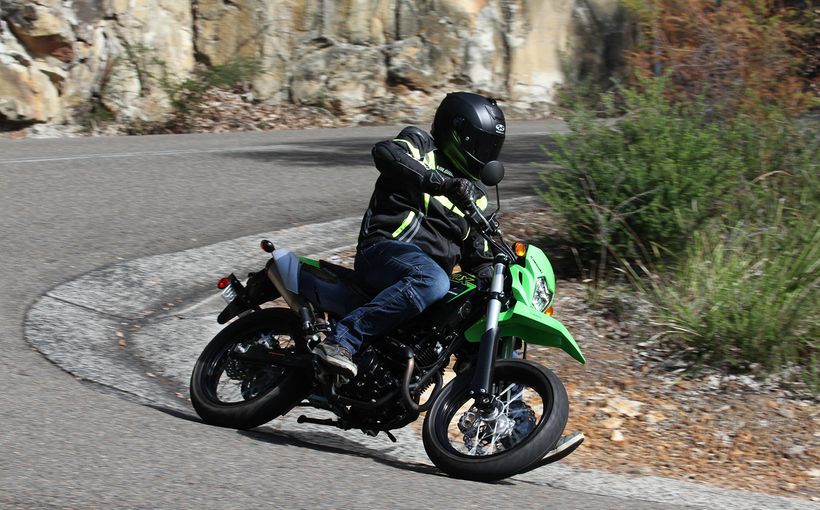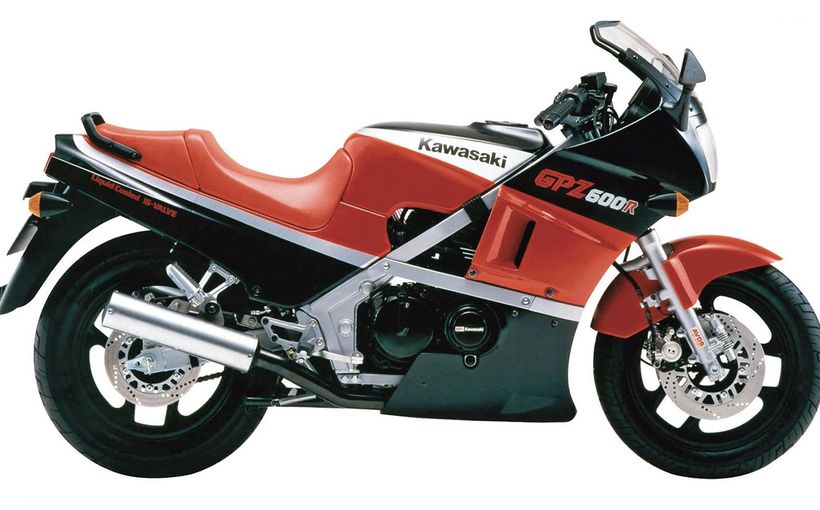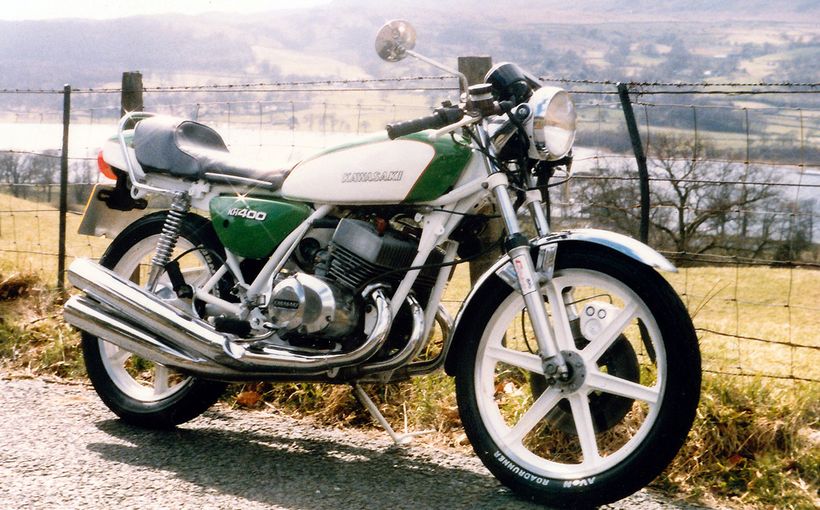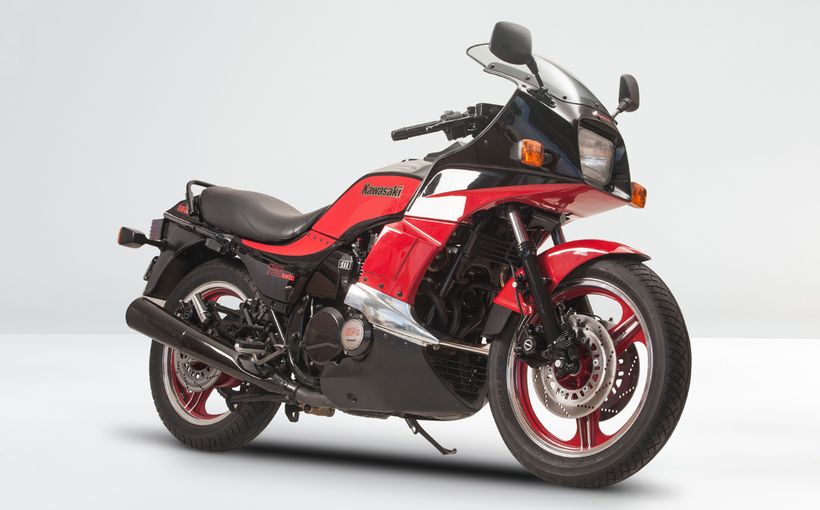
When the RS (Retro Sport) version of the Z900 came our way, I wasn't sure I'd have a whole lot to say about it other than Phwoah! Nice paint mate — given that we so recently tested the standard Z900 on which it's heavily based. Turns out I couldn't have been more wrong.
Firstly, Kawasaki has gone to some lengths to make the RS a visual treat and in our eyes it's the nicest-looking bike in the entire Team Green model range. Designed as a homage to, rather than an exact replica of, the original Z1, from twenty feet away you’d still be hard pushed not to be taken in and I lost count of the number of double-takes this bike garnered as I rode it around town.

The paint, of course, goes a long way in this regard and really there aren’t many bits of old-school kit more recognisable than a Jaffa Z1. You don’t get real wire spokes like the original, but the sideways-on cast spokes have their edges polished to help give that impression. And although some might whinge about the lack of twin silencers on either side, I seem to recall that the first thing most owners did with the original was chuck on a four-into-one anyway, so shush your noise. It’s probably saved about a ton of weight too. What’s more, with some clever plumbing in the collector box, the pipe acts almost as if it’s straight-through at low-to-medium revs, gases only being forced through a secondary circuit at higher revs. This gives an incredibly fruity note around town where lower speeds mean you can really hear it, but without getting too anti-social at higher revs. All I know is that it’s a wicked and wholly addictive sound, which onlookers seem to enjoy as much as the rider, and this is one of very few bikes that has tempted me into riding without earplugs.

You also don’t get twin shocks, which to my eye is a bit of a shame, but again the weight saving would likely be significant and the effectiveness of the horizontal back-link suspension, as Kawasaki calls it, can’t be argued with.
The twin analogue clocks are almost exact copies of the bullet-shaped items which adorned the original 900 and the small, digital display housed between them is both subtle and effective. Its uncluttered layout permanently shows a fuel gauge, engine temp, gear indicator, traction control setting and time of day, while scrollable information includes average fuel consumption (curiously in km/litre), instantaneous fuel consumption in L/100km, a particularly useful range to empty, the usual trip and odo functions and ambient temp. The idiot lights are all in the face of the speedo, but in another example of good thinking are black until illuminated, which means you can barely see them and helps keep the dials as original looking as possible.

One tiny gripe: the grey-on-black (dark blue actually) of the digi-display can be a bit hard to read in strong sunlight, but at least it doesn't rob you of your night vision like the glare from a lot of modern, full-colour TFT screens do. What’s more, the segmented LED headlight (in fact all the lights and indicators on the bike are LED so should last forever) has about a billion candle power, piercing the gloom like a lightsabre and prompting concern for the sight of many of Australia’s nocturnal marsupials! At least you can see them miles up the road as they burst into flames.

The quality of the build throughout is excellent, typified by the aqua-dipped orange decals on the tank and the iconic duck-tail, which are so thin you can hardly feel their edges under the thick-looking lacquer and look as if they've been painted on. The Z logo on the tank just behind the headstock is a nice touch, as is the effort gone into hiding and tidying all the cables, wiring and hoses. The left side is particularly devoid of clutter and the other side isn’t far behind, although the small plastic clip designed to hold the clutch cable neatly against the right-hand radiator hose never stayed in place no matter how many times I put it back. As an owner there is loads to take pride in here, and an afternoon on the driveway with a polishing rag in one hand and a beer in the other, acknowledging the covetous looks from your neighbours, would not be time wasted.

Apart from the obvious aesthetic differences, the 900RS has more than a few component changes over the standard Z900. For one thing you get fully adjustable USD forks up front and the rear has preload and rebound adjustment. On delivery the bike felt a bit soft for my liking but a couple of clicks on all the damping up front and a quarter turn on the rear made a real difference, without adding any harshness. Also at the pointy end you get some pretty serious, Kawasaki-branded, radial-mounted monoblocs, with matching radial master cylinder, squeezing a pair of 300mm discs. These offer excellent power, modulation and good initial bite, without being grabby at lower speeds, and it feels like the ABS setting has been backed off a bit compared to the standard 900, allowing for more aggressive stopping before it intervenes.

Talking of rider aids, the RS features two levels of traction control (three if you count off) which are essentially wet and dry settings. It's not overly sophisticated but functions well and in dry setting (Mode-1) can tell the difference between an intentional wheelie, which it will try to suppress, and lifting the wheel on the gas, which it will allow you to enjoy to the full. We'll come to the gearing in a bit but getting air under the front hoop in 1st is an easy trick. Mode-2 is full Nanny and won't allow either.
Ergonomically this bike fitted me like a glove and I didn't need to adjust so much as a mirror, the gear lever or the span-adjustable handlebar controls. The gearbox action is sublime and the throw really short, which not only feels great, but works faultlessly; I don't think I missed a gear or found a false neutral in over 700km of riding. In contrast, when you actually do want to find neutral, it's a no-brainer with Kawasaki's infallible Positive Neutral Finder. It vexes me greatly that all gearboxes don’t do this.

With a seat height of 835mm, the footpegs aren't tucked up under your bum and yet it's still a doddle to get both feet on the floor. The reach to the chromed 'bars is very natural and comfortable and their width helps make the steering feel light but not flighty. What's more, there's a generous 70° arc, lock-to-lock, which allows for some serious threading through the gridlock. Overall the weight distribution is perhaps not as front-biased as other Kawasakis we've ridden, but it still feels perfectly well planted and corners with utter neutrality, making it easy to jump on and feel at home right away. Handling overall is excellent and you can confidently drag the stumpy hero-blobs on the deck, although beware decking the side-stand bracket as the cut-out switch is next in line.
That aside, you can really push on when circumstances allow, making it very satisfying to hustle the RS down a twisty road. We’re not particularly familiar with the Dunlop Sportmax GPR300 tyres, but they’re slated as being at the sporty end of the sport-touring range as well as being a commuting tyre. They have plenty of grip and feel in the dry, and roll to their edges in a predictable fashion, no doubt contributing to the neutral steering. When they do begin to move about, it’s never a drama and with plenty of warning. We like them.
The engine is a total and utter peach and is perhaps the dominant feature of the package; certainly it contributes hugely to the amount of fun you can have on this bike. The fuelling overall is absolutely immaculate, but be prepared for a very direct throttle action. It’s not a light switch, but you do have to think about feeding the gas in softly from a closed throttle, particularly in low gears at high revs, although it becomes less noticeable the further up the 'box you go.

In terms of the numbers, peak power, which is down 15hp compared to the Z900, happens 1000rpm lower (at 8500) and peak torque (which is practically the same as the Z900) 1200rpm lower (at 6500), meaning that what this engine has to offer is super easy to access. Essentially this equates to a motor that’s always ready to get up and go, no matter what gear you’re in or speed you're doing, and with the short first and second gears, it’s particularly frisky off the line. To help satisfy everyone, sixth gear is a definite over-drive (there's about 1000rpm difference between it and fifth), which means 110km/h arrives at a leisurely 4000rpm. What's more, the engine is so devoid of vibration, thanks to its balance shafts, you can hardly tell if it's still running. What with the gains in fuel consumption this offers and the super-comfy seat, this is an all-day tourer if the mood takes you and getting well over 350km from your 17 litres of juice is easy on the freeway (even spirited riding didn’t get us much below a 300km range).
The most surprising part of all that is that you can still happily cruise the city streets in top gear if you're in the mood, making for a very relaxed and Zen-like commute but with enough instant torque to get you into any gap you’re chasing.

The list of retro bikes that I’d consider owning has previously been one, the Thruxton R. With the introduction of the Z900RS that list has emphatically grown to two. Kawasaki has done a brilliant job on this bike in every way. It looks bloody gorgeous, the build quality is superb, the suspension works properly, the brakes are excellent and that motor is just a joy. On top of that it excels in all areas: as a commuter, a real rider’s bike and a capable tourer. Oh, and if you just want a bike that’ll make you smile every time you open the garage door, it’ll do that too, in spades.
There’s so much more we could say about this bike but I think it's pretty clear how it made us feel and how much we like it. Get yourself a test ride on one as soon as possible and find out just how good a modern retro can be.

APPLES WITH ORANGES
It's hard to decide what is and isn't direct competition for the RS. By capacity alone, clearly the only things out there are the Yamaha XSR900 ($14,400) and the Triumph Street Cup ($15,600) and Street Twin ($13,700), all of which significantly under-cut the Kawasaki in terms of price. Of these three, the Street Cup is the closest to the Kwak in terms of street appeal, and Yamaha really needs to bring in the XSR RD900 in yellow and black to help redress that.
Talking of Triumph, if we go on a price basis rather than capacity, the T120 is a bit cheaper at $17,200 and the standard Thruxton slightly more expensive, at $18,700, than the RS ($17,999). For that money you get a beaut of a 1200cc motor and some very authentic ‘60s rather than ‘70s styling. Neither of these is as sporty as the Kawasaki and brakes and suspension are not in the same league; for that you'd need to go to the Thruxton R, which is many beer vouchers more at $21,100.
SPECS: 2018 KAWASAKI Z900RS
ENGINE
Type: Liquid-cooled, four-stroke, DOHC, 16 valves, in-line four cylinder
Capacity: 948cc
Bore x stroke: 73.4mm x 56.0mm
Compression ratio: 10.8:1
Engine management: Electronic fuel injection
PERFORMANCE
Claimed maximum power: 110hp (82kW) at 8500rpm
Claimed maximum torque: 98.5Nm at 6500rpm
TRANSMISSION
Type: Six-speed
Final drive: Chain
Clutch: Wet, multi-plate, slip-assist
CHASSIS AND RUNNING GEAR
Frame: Tubular steel, engine as stressed member
Front suspension: 41mm USD cartridge fork, 120mm travel, adjustable for spring-preload, compression and rebound damping
Rear suspension: Single shock, 140mm travel, adjustable for preload and rebound
Front brakes: Twin 300mm discs with radial monobloc four-piston caliper, radial master cylinder, ABS equipped
Rear brake: Single 250mm disc with single-piston caliper, ABS equipped
Wheels: Spoke-style, cast aluminium
Tyres: Dunlop Sportmax GPR300, front 120/70-17, rear 180/55-17
DIMENSIONS AND CAPACITIES
Rake: 25°
Trail: 98mm
Claimed wet weight: 214kg
Seat height: 835mm
Wheelbase: 1470mm
Fuel capacity: 17 litres
Fuel Consumption: 5.7L/100km
ETCETERA
Price: $17,999 incl GST
Colour: Candytone Brown with Candytone Orange (Jaffa to you and me)
Test bike supplied by: Kawasaki Motors Australia
Warranty: 24 months, unlimited kilometres










